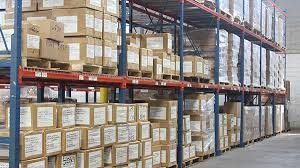Introduction to Inventory Carrying Costs

Content
What is the first thing that comes to your mind when you think of starting a new business? It must be the ratio of costs and profit. One of the sole purposes of a business is to earn a profit. This can only be achieved by proper calculation of cost.
We all would agree that one of the major parts of costs in retail is inventory. The inventory itself is a very important aspect of a business, therefore the cost to manage a full functioning inventory should be calculated beforehand.
This article will not give you an introduction to carrying costs, but will also help you understand the inventory carrying cost components.
What are the costs of carrying inventory?
Carrying cost also known as inventory carrying cost refers to the cost a business incurs over a certain period of time to hold and store its inventory.
It is a certain percentage of the total cost which includes the cost of items in storage,storage-related expenses, and the cost of replacing products.
Let us understand this concept better with an example.
Hypothetically, company A has an inventory carrying the cost of 10% and its average annual value of inventory is Rs.1,00,000 ( One Lakh). Then the annual cost of inventory will be Rs.10,000 (ten thousand). In reality inventory costs run between 25 to 30% of the total cost. This percentage is dynamic, it gets affected by many factors.
The two most important ones are:
1. Size of the business
2. Inventory turnover per year
Inventory carrying cost needs to be planned. This helps in the smooth functioning of the firm.
Factors that determine carrying cost
Below mentioned are some of the factors that determine the carrying costs/ inventory holding costs:
1. The volume of the inventory
The number of units that are to be stored. This is one of the most important factors that determine the carrying cost.
2. Location of the storage facility
This would give an idea about the transportation cost. If the warehouse is located near the production house, lower costs on transportation will be recorded.
3. Type of inventory
Perishable( needs to be highly maintained); products that require customs clearance; goods of high value also known as luxury goods; dangerous or flammable goods
4. Shipping
It is essential to note the mode of shipment, the density/ volume of the stock. One important question that one should ask himself before calculating the shipping charges is, “Is the freight stackable?”
5. Returns and visibility
Repacking or inspection costs come under this category. Costs of installation of a tracking system also fall under the same category. One must include this such expenses while calculating the carrying cost.
It is important to bring down the carrying costs so that a business makes profits.
Inventory Carrying Cost Components
There are four main components to inventory carrying cost:
1. Capital cost
This inventory carrying cost is that which a business spends, usually expressed as a percentage of the total cost of inventory.
The percentage is either derived from calculation or based on industry standards.
2. Storage space cost
The storage space inventory carrying cost is a combination of the warehouse rent, electricity charges and other expenses related to storage space, plus the handling costs of transporting inventory in and out of the warehouse.
3. Inventory service cost
The inventory service cost includes the insurance premiums you may have taken on the inventory and/or taxes paid to the government.
4. Inventory risk cost
Holding inventory comes with certain risks. These risks could be a risk of inventory becoming obsolete. In such a case the value of the inventory will reduce to a fraction of its initial cost.
Other risks could be inventory getting expired or items going past sell-by date or use-by date. In such cases, the inventory will need to be scrapped and the cost associated with these items written off.
Lastly, you will also need to factor in the risk of pilferage and theft that may occur.
Strategy to bring the cost of inventory down
Let us discover some strategies which can help bring this cost down.
1. Obsolete inventory
Many times our shelves are occupied with those goods that are not selling and tending. Retailers and suppliers should have good knowledge of product life-cycle and shifts in the market. The standard period of the product life-cycle is 12 months. When a product is not selling in the market, it becomes obsolete.
The existence of these products is no longer important in a warehouse. In colloquial language, this inventory is also known as dead stock.
Therefore such stock should be removed for the betterment of the business. There are many ways to get rid of this stock such as bundling/grouping it with new and trending products, donating it to charity or putting such products at a high discount.
2. Purchasing frequency
This refers to an increase in purchasing speed. One of the most essential parts of this strategy is forecasting the demand of the consumer. Increase your purchase frequency to reduce the storage of stock.
Forecasting consumer demand can be done in many ways. Sales reporting is an easy way for this process. Smaller firms should try to avoid increasing purchase frequency.
Summary
Inventory lying in your storage facility is one of the major factors affecting cost. It is important for retailers to carefully examine all inventory carrying costs and determine what changes they can make to reduce that cost.
A modern cloud-based inventory management system can help you control your inventory carrying cost while providing inventory control and inventory management across your various storage locations.
We hope that this article was helpful! Do let us know in the comments section below and for more such articles stay tuned!
Sync up with Easyops, register and try out your seven-day free trial now: https://app.easyops.in/#/sign_up